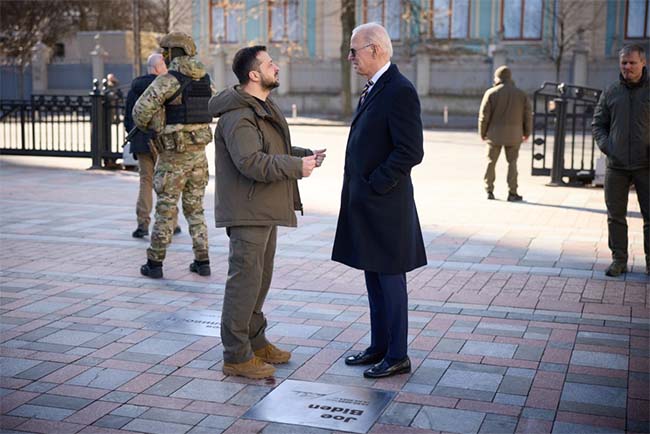Many California cities offer their homeless residents one-way bus tickets to other places
by Marisa Kendall
Mayor London Breed, outgoing mayor of San Francisco, made waves recently with a major policy shift: Before providing a shelter bed or any other services, city workers must first offer every homeless person they encounter a bus or train ticket to somewhere else.
But while San Francisco has gotten an outsized amount of attention for putting its busing program at the forefront of its homelessness strategy, other California cities and nonprofits continue to quietly send small numbers of unhoused people all over the country. At least one new program is set to launch early next year.
For an unhoused person who wants to move in with family in another city or state, or who got stuck somewhere after a job or housing prospect fell through and needs help getting home, these types of programs can be a gamechanger. But some activists worry they can be used coercively to move unhoused people out of sight instead of helping them. And once someone is bused away, it’s hard to tell what happens to them — whether they successfully reunite with family, or become homeless on another city’s sidewalks.
“In general, the ability to travel back to a place where you have a home is really important and can be a lifesaving service, in fact, and can help to reunite families,” said Niki Jones, executive director of the Sacramento Regional Coalition to End Homelessness. “When done in good faith, it can be an important and powerful intervention.”
Many programs do some homework before sending their clients off on a bus, but the amount of effort they put in varies. One nonprofit serving homeless young people in Los Angeles has a therapist call the client’s family in the destination city, to make sure the client is going into a safe, welcoming environment. One of San Francisco’s relocation programs requires the client only to have a vague connection to their destination city.
These programs are garnering attention at a time when city leaders are facing pressure from all sides, including from Gov. Gavin Newsom, to get rid of homeless encampments, but lack the resources to give everyone a home or shelter bed. Buying someone a one-way ticket out of town is a much cheaper alternative. But the number of people who can benefit from these programs tends to be small. Data from throughout California consistently shows that most people who are homeless are from the county they’re in. And homelessness, addiction and other traumas have marred many people’s relationships, leaving them with no one to help them in another city.
San Francisco offers bus tickets before shelter
Shortly after beginning an aggressive crackdown on tent encampments in San Francisco, Mayor Breed ordered all city agencies to “offer and incentivize” the city’s busing program before other services. Those who decline any help may be at risk of being arrested for illegally camping in a public place.
Providing free bus tickets to unhoused people is nothing new in San Francisco, which has been offering some form of this program for about two decades, said Emily Cohen, deputy director of communications and legislative affairs for the city’s Department of Homelessness and Supportive Housing. But usage declined during the COVID-19 pandemic, when travel was restricted, and it didn’t pick back up, she said. The mayor’s directive was intended to fix that, she said.
The increased emphasis on busing also comes as the demographics of San Francisco’s homeless population are shifting. This year, 41 percent of the people surveyed in San Francisco’s point in time count reported they were living in another city or state when they lost their housing. That’s up from 29 percent two years ago.
“There are definitely an increasing number of people who are experiencing homelessness in San Francisco who aren’t originally from San Francisco,” Cohen said.
San Francisco offers three programs to help unhoused people relocate outside of the city. Journey Home, launched in September 2023, has the lowest barrier to entry. While other programs require clients to work with a case manager on a detailed plan to find and hold onto housing when they arrive in their new city, Journey Home requires only that someone be healthy enough to travel and prove they have some connection to their destination city. That proof could be a phone call to a friend or relative in the city, a receipt showing the client once got food stamps there, or an ID with an address in that city. Clients do not need to prove they have housing in the destination city, and the whole process, from intake to sitting on a bus, can take a day or two.
Since July 2022, San Francisco has relocated a total of 1,039 unhoused clients via Journey Home and other programs, according to city data.
The number of clients relocated via Journey Home spiked in August of this year (the month Breed issued her order) — 25 people were moved, up from nine the month before. The city relocated another 32 people through other programs. That same month, the city placed 120 people from encampments into shelters, and another 429 people on the street declined help, according to the city.
While Lukas Illa, a human rights organizer with the San Francisco-based Coalition on Homelessness, supports programs that help unhoused people who want to relocate, he’s skeptical of Journey Home. The choice to leave San Francisco should be the unhoused person’s to freely make, he said. And he says that’s not the case when police, who have the power to cite and arrest people, offer bus tickets as a first resort.
“Journey Home needs to be so deliberate and to really center the agency and the autonomy of the person it is offered to, and not used as a cudgel to threaten arrest or jail time,” Illa said.
Cohen said no one is being forced to leave San Francisco.
“The intention is to facilitate connections with loved ones and home communities, if that is a safe and healthy option for you,” she said. “But no one is required to take that option.”
Other cities that use homeless busing programs
San Jose has budgeted $200,000 to launch a relocation program called Homeward Bound, which is expected to start in February. That money can go toward a client’s bus or plane ticket, or to help with utility bills or other expenses for the friend or family member taking them in. The city will make sure clients have friends or family to help them in their destination city, but staff are still ironing out the specifics, said Tasha Dean, spokesperson for Mayor Matt Mahan.
“Reconnecting people living on the streets with family members or loved ones who want to care for them is just common sense,” Mahan said in a statement. “It’s the least expensive, most impactful program we could launch.”
Sacramento County also offers those services, but they aren’t widely used, said county spokesperson Janna Haynes. During the 2022-23 fiscal year, 17 people used the county’s Return to Residency Program to leave the county. That program has since dissolved, and now social workers in various county programs offer the service on a case-by-case basis.
The city of Los Angeles doesn’t run a busing program, but multiple nonprofits within the city offer similar services. PATH helped 313 clients reunite with family in the last fiscal year, and a little more than half of those clients left LA County.
A Safe Place for Youth also helps young people reunite with friends and family outside LA.
Cities and nonprofits in other states also run busing programs — and sometimes send people to California. Haven for Hope, which operates a large homeless shelter and service center in San Antonio, Texas, gave about 60 people one-way bus tickets out of the city last year, said Alberto Rodriguez, vice president of operations. Before they send a client on their way, Haven for Hope calls the family or friend they are going to live with and confirms the client can stay there, Rodriguez said.
“We’re never just going to send someone back to homelessness in another city or another state, in the same way we don’t want other cities or other states to send their homeless clients to San Antonio without connecting with us,” he said.
Where do people who are bused end up?
Of the 151 people relocated from San Francisco since August, at least 29 went to other cities within California. At least another 12 went to Texas, six went to Florida and seven went to Georgia. Due to a data processing error, the city couldn’t provide information on where 34 people went.
It’s harder to tell what happens to those people once they reach their destination.
San Francisco only recently started requiring staff to check in with clients 90 days after they leave, but staff often can’t get a hold of them in their new city, Cohen said. The city didn’t provide data on the outcomes of those 90-day calls, which started in July, in time for publication.
About 15 percent of people who left San Francisco through the Department of Homelessness and Supportive Housing’s relocation program between July 2022 and July 2023 ended up back in San Francisco, using the city’s homeless services, within a year.
Cohen called that an 85 percent “success rate,” despite the fact that even though someone didn’t return to San Francisco, they might have ended up homeless in their new city.
“That is fantastic,” Cohen said, “in terms of the amount of investment for the outcome we are able to achieve.”
















